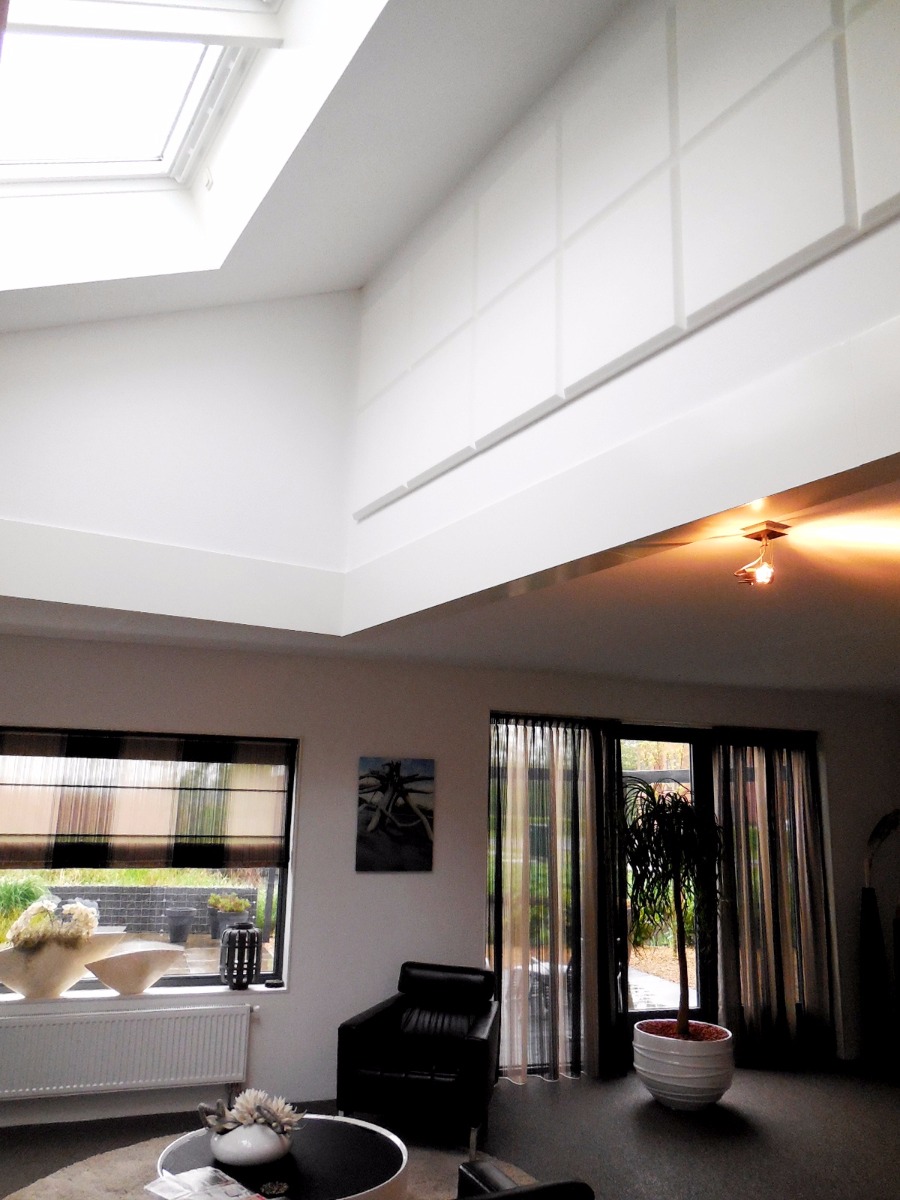Reverberation at home
Do you experience reverberation in the living room, hall, or kitchen? Reverberation may be an issue in more rooms than you currently are aware of. Especially in new homes, reverberation is a common problem. During the construction phase, the biggest focus lies on the layout and the design of the house, whereas acoustics get a lower priority. Upon completion, the latter may turn out to be of poor quality.

Reverberation is caused by using (too many) hard materials as part of the interior. Think, for example, of large windows, or unprocessed concrete, and hard floors. Especially higher rooms suffer from poor acoustics. On top of potential problems related to wellbeing, every room with reverberation is perceived as unsociable. Unintelligibility during conversations is inherent to poor acoustics. Or imagine playing music in such a room, the quality of which will be downright bad.
Most frequently asked questions
Which product is most suitable?
On the page absorption panels you will find an overview of the available products for improving acoustics, for example in the living room. All absorption panels have excellent absorption values in the same frequency range as voice and living sounds. These sounds fall in the categories of medium and high frequencies, and can already be effectively attenuated by using the most unsophisticated products of our range.
We advise you to select a product that contains a thickness of minimally 25 mm. If your budget is sufficient, choose a thicker material (we generally recommend a thickness of 40 or 50 mm). This does not imply right away that you need less panels, but a thicker product has significantly higher absorption values. This ultimately results in better acoustics.
How much do I need?
According to the general rule of thumb you need to apply an amount of sound-absorbing material equivalent to about 25% up to 50 % of the floor area. The according result can be called reasonable or even good. To illustrate, if you have a space of 100 m², at least 25 m² of absorption surface is required to obtain this result.
Where should I apply the panels?
When absorption panels can be mounted on both walls and ceilings, an optimal result can be achieved. In this way, the acoustics will be optimised in the entire room. If the room is already furnished, this will not always be possible. But even with a ceiling only solution, an excellent result can be achieved. In that case you deviate from the aforementioned rule of thumb and start by equipping at least 40% of the ceiling with absorbent products. Which ones does not matter that much, below you find our suggestions.
Popular products
The most popular products come from the Flamex and Akotherm GG series. These absorption panels contain excellent absorption values, and are easy to cut to size and assemble. A few suggestions:
Ceiling panels
- Flamex Basic
- Flamex Facet
- Akotherm GG
- Silent Office Ceiling Island
Wall panels
- Akotherm Facet
- Silent Office Wall Panel
Just do it yourself! 
Can't find a suitable product, but you are quite a practicle person? Then consider a 'do-it-yourself solution'. On our tips page you will find two nice articles based on success stories from customers who decided to come up with a solution themselves. Covering an MDF plate with colourful cloth and using Akotherm D40 or Akotherm Facet as a filling gives a nice touch to the interior and improves the acoustics!
A homemade panel is certainly not inferior to a ready-made product! If you use enough absorption material relative to the floor area, the room acoustics will definitively improve. A big plus is that the panel can be completely designed up to your own taste.
Questions? 
Do you have any questions about this topic? Please feel free to contact us

 Sound Absorption
Sound Absorption  Sound Insulation
Sound Insulation  Vibration Isolation
Vibration Isolation  Silent Ventilation
Silent Ventilation  Accessories
Accessories  Thermal & Acoustic Insulation
Thermal & Acoustic Insulation 